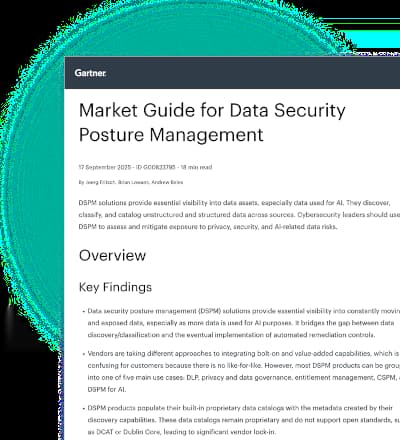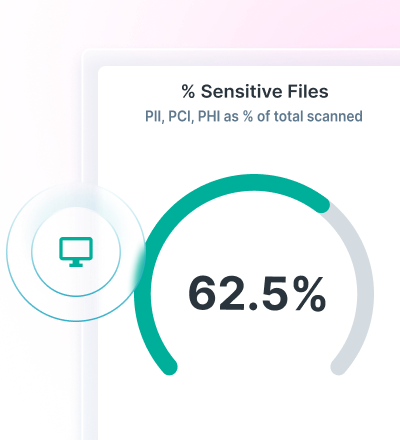What a Next-Generation Firewall is and Why it Matters for Modern Networks
0 dakika okuma

Why Firewall Evolution Matters
Work has changed. Apps are everywhere, data is in motion and encrypted traffic is the norm rather than the exception. Attackers take advantage of this reality with phishing-led intrusions and malware that blends into normal business traffic.
A next-generation firewall (NGFW) combines the core allow/deny controls of a conventional firewall with application-level visibility, deep inspection, intrusion prevention and intelligent traffic management.
Forcepoint Next-Generation Firewall (NGFW) combines fast, flexible networking and industry-leading security to reduce risk across the network. That means security and connectivity work as one system, so organizations can protect the network from advanced threats and keep users productive.
Understanding the Evolution of Firewall Technology
From basic packet filtering to application-aware security
First- and second-generation firewalls inspected header information such as IP addresses, ports and protocols. They could confirm that a session looked legitimate and block known-bad destinations. What they could not do was examine the actual content of traffic or determine which application created it.
As business moved to web and cloud, adversaries began hiding threats inside legitimate-looking sessions and encrypted channels. Security needed a way to see inside.
NGFWs brought inspection up the stack. Instead of stopping at layers three and four, they analyze traffic all the way to the application layer. The goal is to understand intent and content, not just destination and port.
Why NGFWs emerged
The rise of web-based malware, evasive command-and-control and the explosion of SaaS created blind spots for traditional controls. Attackers learned to tunnel over allowed ports, mimic permitted applications and weaponize encrypted traffic.
Organizations needed real-time inspection that combined signatures, behavior analytics and context to detect what older firewalls missed. That demand drove the arrival of NGFWs and cemented their role at the heart of modern network security.
Traditional versus next-generation differences
Next-Generation Firewalls combine traditional firewall technology with additional functionality, such as encrypted traffic inspection, intrusion prevention systems and more. Most notably, they include deep packet inspection (DPI).
While basic firewalls only look at packet headers, deep packet inspection examines the data within the packet itself, enabling users to more effectively identify, categorize or stop packets with malicious data.
The result is a control point that protects based on what the traffic actually is, not just where it appears to be going.
Core Capabilities of Next-Generation Firewalls
Below are core capabilities of NGFWs. Keep in mind that these capabilities are meant to show general examples, and actual capabilities may differ between specific solutions.
- Deep packet inspection: NGFWs inspect data at each of the four TCP/IP communication layers: application, transport, IP/network and hardware/datalink. This enables next-gen firewalls to operate with application awareness, an understanding about which applications are receiving and generating traffic and the types of user and application behavior that may be expected in those traffic patterns.
- Automation and orchestration: NGFWs enable automatic deployment and instant updates that reduce the administrative burden on IT teams.
- Intrusion detection/prevention: Next-gen firewalls detect and prevent cyberattacks by inspecting traffic at higher TCP/IP layers and monitoring for potential attacks based on anomalous behavior or specific attack signatures.
- Application control: NGFWs provide real-time visibility into users and data interacting with applications, enabling high-risk applications to be identified and blocked when necessary.
- Distributed Denial-of-Service (DDoS) protection: NGFWs are stateful technologies that check the characteristics of each connection to detect the many different types of illegitimate requests that may comprise a DDoS attack.
- Unified threat management (UTM): NGFW solutions offer comprehensive security services that include antivirus, content filtering, malware infection and mitigation.
Benefits of Next-Generation Firewalls for the Modern Enterprise
Forcepoint Next-Generation Firewall delivers industry-leading network security at scale. Organizations can deploy from anywhere in the world through the Secure Management Console (SMC) and unify policy management, incident response and reporting under one console.
Below are additional benefits of Forcepoint NGFW:
- Centralize Management with the SMC: Manage network policies, identify and prevent security incidents in real time and review the performance of appliances and applications through the SMC.
- Protect the Network from the Unknown: Pair industry-leading security with trusted network management through zero trust network access controls, Advanced Malware Detection and Protection (AMDP), intrusion prevention and other controls.
- Deploy Appliances from Anywhere: Automate, orchestrate and scale the network anywhere in the world with a broad range of physical and virtual appliances.
- Customize and Scale with Modular Network Interfaces: High-end, rack-mounted Forcepoint NGFW appliances accept a range of extensible network interfaces, providing flexibility and adaptability for new network infrastructure.
- Balance Network Demands and Prevent Downtime: Build strong network resiliency and scalability through load balance clustering and multi-ISP support load balancing with application-aware routing, including the ability to update software and appliances without service breaks.
- SD-WAN Integration: Forcepoint NGFW with SD-WAN provides industry-leading network security protection with intelligent traffic management, delivering secure connectivity across sites to help reduce operational complexity and costs.
Key Factors to Look for When Evaluating NGFW Solutions
Security efficacy
Look beyond checkboxes. Evaluate the depth of deep packet inspection, the quality and freshness of IPS signatures, the ability to detect evasion techniques and how well the platform integrates malware analysis and threat intelligence.
Performance and scalability
Test real traffic, not lab-perfect flows. Turn on the features you will actually use such as decryption, IPS, application control and DNS/URL filtering, and measure latency and throughput.
Confirm that performance is consistent as you add branches and users.
Centralized management and automation
At scale, management is everything. Look for a single console that can push consistent policy to devices, provide role-based access and automate routine tasks.
Choosing a Next-Generation Firewall for the future
Modern networks demand performance and simplicity to keep users productive. Forcepoint is ready to help your organization reduce risk across the network. Learn more about Forcepoint NGFW today.

Tim Herr
Daha fazla makale oku Tim HerrTim serves as Brand Marketing Copywriter, executing the company's content strategy across a variety of formats and helping to communicate the benefits of Forcepoint solutions in clear, accessible language.
- Forcepoint NGFW
Makalede
 Forcepoint NGFWLearn More
Forcepoint NGFWLearn More
X-Labs
Get insight, analysis & news straight to your inbox

Konuya Gel
Siber Güvenlik
Siber güvenlik dünyasındaki en son trendleri ve konuları kapsayan bir podcast
Şimdi Dinle








